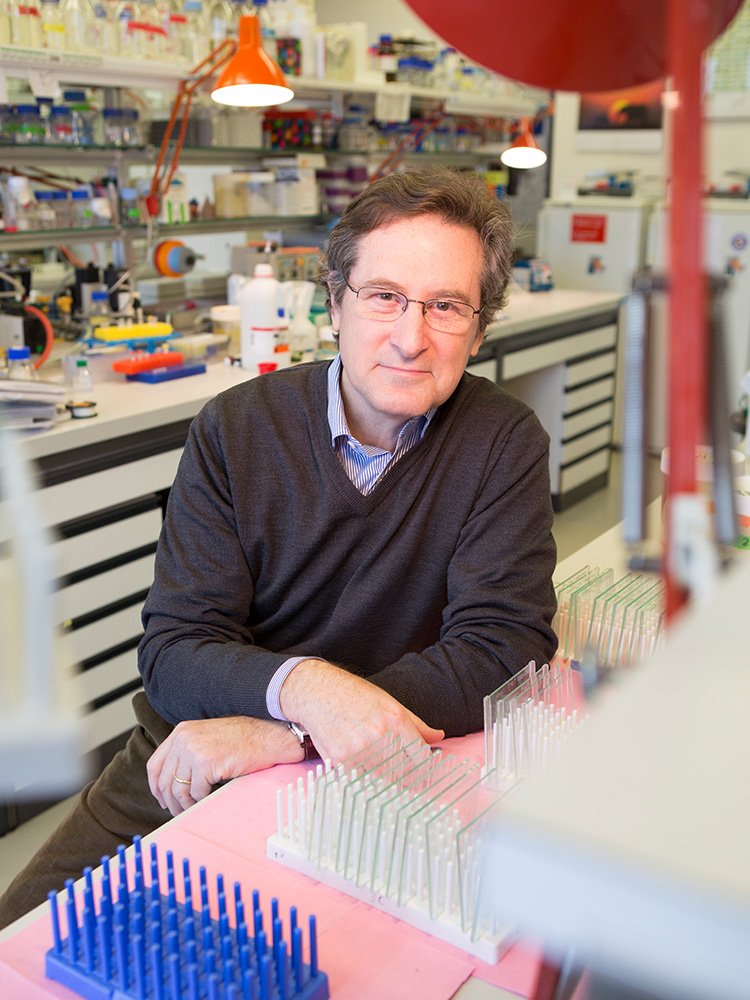The Discovery of TOR: From the Lab to the Clinic
In the early 1990s, the biochemist Michael N. Hall discovered the protein «TOR» in yeast cells. It later emerged that TOR centrally controls cell growth in many organisms and is implicated in many diseases such as diabetes and cancer. The discovery of TOR has led to new therapeutic strategies.
The rapid technological developments and advances in molecular biology research over the last 50 years have led to enormous growth in the understanding of the vital processes in living cells. Even though findings from basic research do not always have immediate medical application, they still help us to better understand the causes of disease and to develop new treatment options.
An example illustrating the value of basic research for medicine is the discovery of the protein «Target of Rapamycin» or TOR for short. The biochemist Michael N. Hall first identified this protein in unicellular yeast some 30 years ago, as a young professor at the Biozentrum of the University of Basel. He then demonstrated that TOR plays a fundamental role in the cell by switching diverse signaling pathways on and off and thereby controlling cell metabolism and growth.
The protein TOR controls cell growth
«The discovery of the TOR protein was by no means the end of the story – it was the beginning,» says Hall. «Over the years that followed we also learned that TOR controls cell growth and, along with others, described the underlying mechanisms, in simple yeast cells and in complex organisms such as plants, insects and animals, including man.» In mammals, the TOR protein is known as mammalian TOR or mTOR.
With his research, Hall has fundamentally changed the understanding of cell growth. Earlier it was assumed that cells simply grew if nutrients were available. However, Hall proved that growth is a highly regulated process controlled by TOR. Furthermore, in the last years it has become increasingly clear that TOR also plays an important role in ageing as well as in many diseases including cancer. Cancer cells are pathologically altered cells which have lost cell growth control. They grow and divide incessantly.
Carcinogenesis and TOR
The cause of uncontrolled cell growth is, among other factors, a dysregulated mTOR signaling network. It is estimated that about 70 percent of all cancers can be attributed to mTOR malfunction. Based on work with cell cultures and animal models, Hall’s team has demonstrated that mTOR activity is increased in tumor tissue and promotes cancer cell growth via various signaling pathways. Treatment with the cancer drug rapamycin, which inhibits mTOR activity, can often inhibit tumor growth. The many mTOR signaling pathways that have been elucidated in the past years provide new clues for targeted cancer treatments.
As our understanding of TOR has increased, Hall’s field of activity has also expanded. Along with the basic research in his laboratory, his group also increasingly pursues translational projects. This type of research is conducted at the interface of basic research and clinical research. In close collaboration with physicians, Hall investigates whether findings from the laboratory can be translated to the clinic and the treatment of human disease.
Resistant cancer cells in focus
In the translational project «MERiC», the biochemist joined forces with the University Hospital Basel and the Department of Biosystems Science and Engineering (D-BSSE) of the ETH Zurich in Basel. This consortium is funded by the European Research Council (ERC) with a Synergy Grant. The goal is to uncover the signaling pathways that are dysregulated in various types of cancer and how cancer drugs slow tumor growth. This is important because cancer cells often find ways to circumvent the inhibitory effect of drugs and to continue proliferating. Model systems for liver cell carcinoma and analyses of tumor biopsies taken from patients at different times during treatment should provide insights into how tumors develop drug resistance.
Diabetes and TOR
Hall and his team also work together with clinical researchers at Claraspital in Basel. They deal with the role of mTOR in metabolism, in particular in the development of diabetes. Studies of obese mice indicate that cells in adipose tissue become diabetic, in other words insulin resistant, and consequently trigger inflammation. «We know that mTOR is involved but we don’t know exactly how,» says Hall. «The analysis of adipose tissue samples from obese patients and normal individuals, as well as from diabetics, should shed some light on this process.»
Over the last three decades, Hall’s fundamental discoveries about TOR have advanced from basic research to clinical practice. Pharmaceutical companies now develop cancer drugs, so-called TOR inhibitors, that counteract the abnormal activation of TOR in tumor cells. These include the two approved drugs «Afinitor» from Novartis and «Torisel» from Pfizer.
Hall’s significant research successes have been recognized by the scientific community with numerous highly distinguished prizes including the Lasker Award, the Gairdner Award and the Breakthrough Prize in Life Sciences, just to mention three from a long list. Since 2014, Hall has also been a member of the American «National Academy of Sciences» (NAS).
Closing in on the causes of resistant tumors
The Synergy Grant is the most highly endowed funding instrument of the European Research Council (ERC). In the ERC project «MERiC – Mechanism of Evasive Resistance in Cancer», Hall and his colleagues combine basic molecular research, clinical research and computational sciences to systematically investigate the causes of the development of drug resistant tumors. Understanding the evasive strategies of cancer cells could help identify predictive biomarkers and to develop more effective, targeted treatments.



